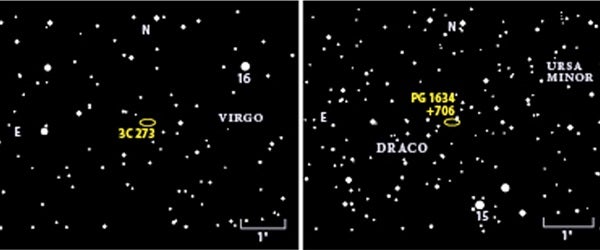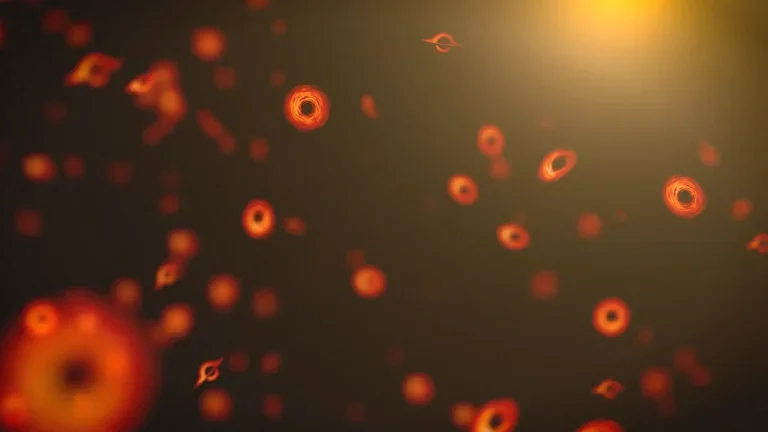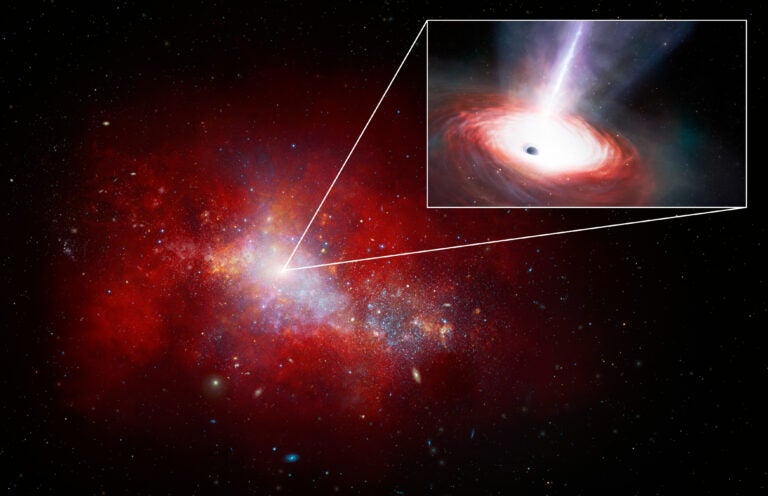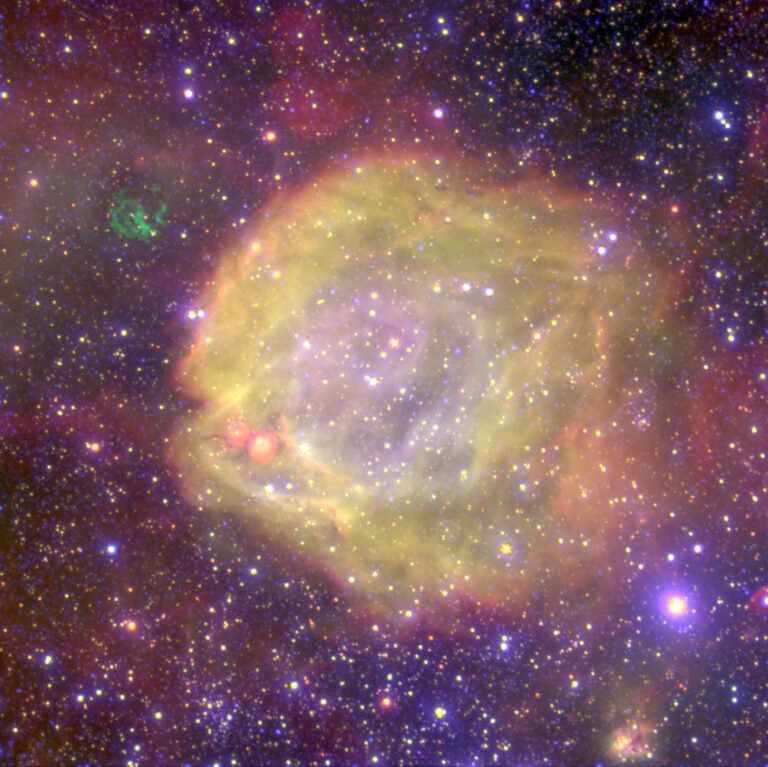In the June night sky after sunset, two quasars, one much more distant than the other, culminate for visual observers. Quasars are the universe’s most luminous objects. They represent the blazing cores of early galaxies whose tremendous light output (each is billions of times more luminous than our Sun) comes from gas falling into a supermassive black hole.
As the gas spirals inward, it unleashes a tsunami of raw energy into space. So powerful are quasars that, despite their vast distances (billions of light-years), we amateur astronomers can spot the brightest ones through even modest telescopes.
Let’s explore these two powerhouses of light. The first quasar astronomers designated as 3C 273 because it’s the 273rd entry in the Third Cambridge Catalogue of Radio Sources. This object is the nearest and brightest of these super-energy sources. It radiates with a luminosity equal to 2 trillion Suns!
When at its brightest, 3C 273 can shine at a respectable magnitude 11.7, the brightness of Saturn’s moon Enceladus; when faintest, it glows at magnitude 13.2, only about 0.5 magnitude brighter than Pluto at opposition. The quasar lies about 2.5° from the magnitude 5.0 star 16 Virginis.
Astronomers classify PG 1634+706 as a hyperluminous infrared galaxy, one of the intrinsically brightest objects in the sky. When it reaches maximum, it shines at magnitude 14.24. At its faintest, the galaxy dips to magnitude 14.7, making it a decent challenge for trained visual observers using at least a 10-inch telescope under a dark sky.
PG 1634+706 was brightest around the year 2000, but is now nearing its dimmest. Luckily, PG 1634+706 lies in a fine field, being only about 7′ southwest of a pair of 8th-magnitude stars. Furthermore, this pair lies about 2° north-northeast of the magnitude 5.0 star 15 Draconis, now culminating in the north.
Despite my suggested apertures above, I hate to put a size limit on what telescope is needed to see these quasars (especially PG 1634+706). I never want to scare off keen-eyed observers who would get a thrill from snagging this object through smaller-than-expected apertures. So fear not and test the limits of your vision. As always, let me know how you do at sjomeara@gmail.com.











